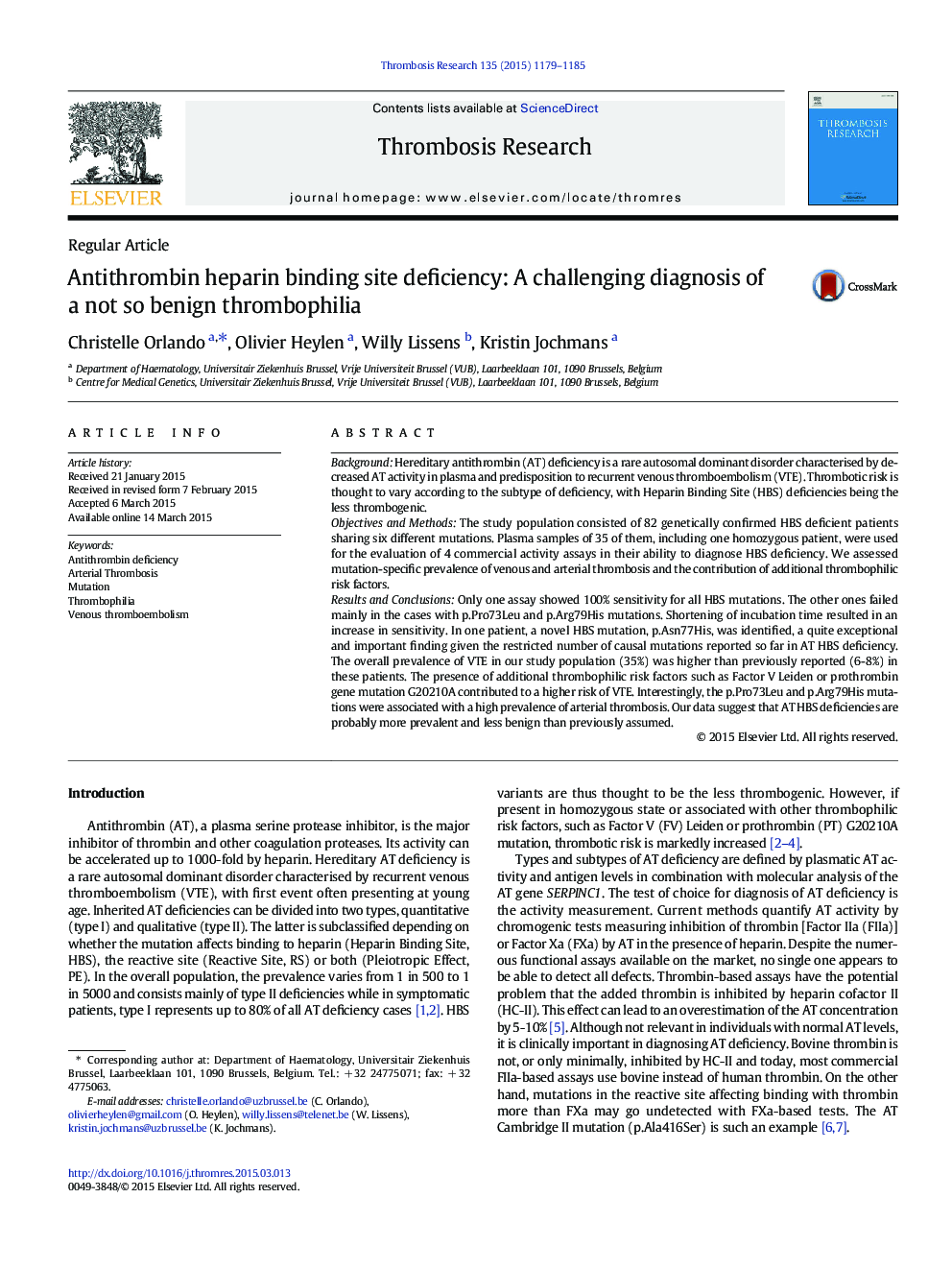| کد مقاله | کد نشریه | سال انتشار | مقاله انگلیسی | نسخه تمام متن |
|---|---|---|---|---|
| 6001831 | 1182957 | 2015 | 7 صفحه PDF | دانلود رایگان |
- We report a novel mutation responsible for AT Heparin Binding Site (HBS) deficiency
- Heterozygous HBS mutations seem to predispose for arterial thrombotic events (ATE)
- AT HBS deficiencies at higher risk for ATE are not detected by some activity assays
- Factor V Leiden and PT G20210A contribute to prevalence of VTE in HBS patients
BackgroundHereditary antithrombin (AT) deficiency is a rare autosomal dominant disorder characterised by decreased AT activity in plasma and predisposition to recurrent venous thromboembolism (VTE). Thrombotic risk is thought to vary according to the subtype of deficiency, with Heparin Binding Site (HBS) deficiencies being the less thrombogenic.Objectives and MethodsThe study population consisted of 82 genetically confirmed HBS deficient patients sharing six different mutations. Plasma samples of 35 of them, including one homozygous patient, were used for the evaluation of 4 commercial activity assays in their ability to diagnose HBS deficiency. We assessed mutation-specific prevalence of venous and arterial thrombosis and the contribution of additional thrombophilic risk factors.Results and ConclusionsOnly one assay showed 100% sensitivity for all HBS mutations. The other ones failed mainly in the cases with p.Pro73Leu and p.Arg79His mutations. Shortening of incubation time resulted in an increase in sensitivity. In one patient, a novel HBS mutation, p.Asn77His, was identified, a quite exceptional and important finding given the restricted number of causal mutations reported so far in AT HBS deficiency. The overall prevalence of VTE in our study population (35%) was higher than previously reported (6-8%) in these patients. The presence of additional thrombophilic risk factors such as Factor V Leiden or prothrombin gene mutation G20210A contributed to a higher risk of VTE. Interestingly, the p.Pro73Leu and p.Arg79His mutations were associated with a high prevalence of arterial thrombosis. Our data suggest that AT HBS deficiencies are probably more prevalent and less benign than previously assumed.
Journal: Thrombosis Research - Volume 135, Issue 6, June 2015, Pages 1179-1185
